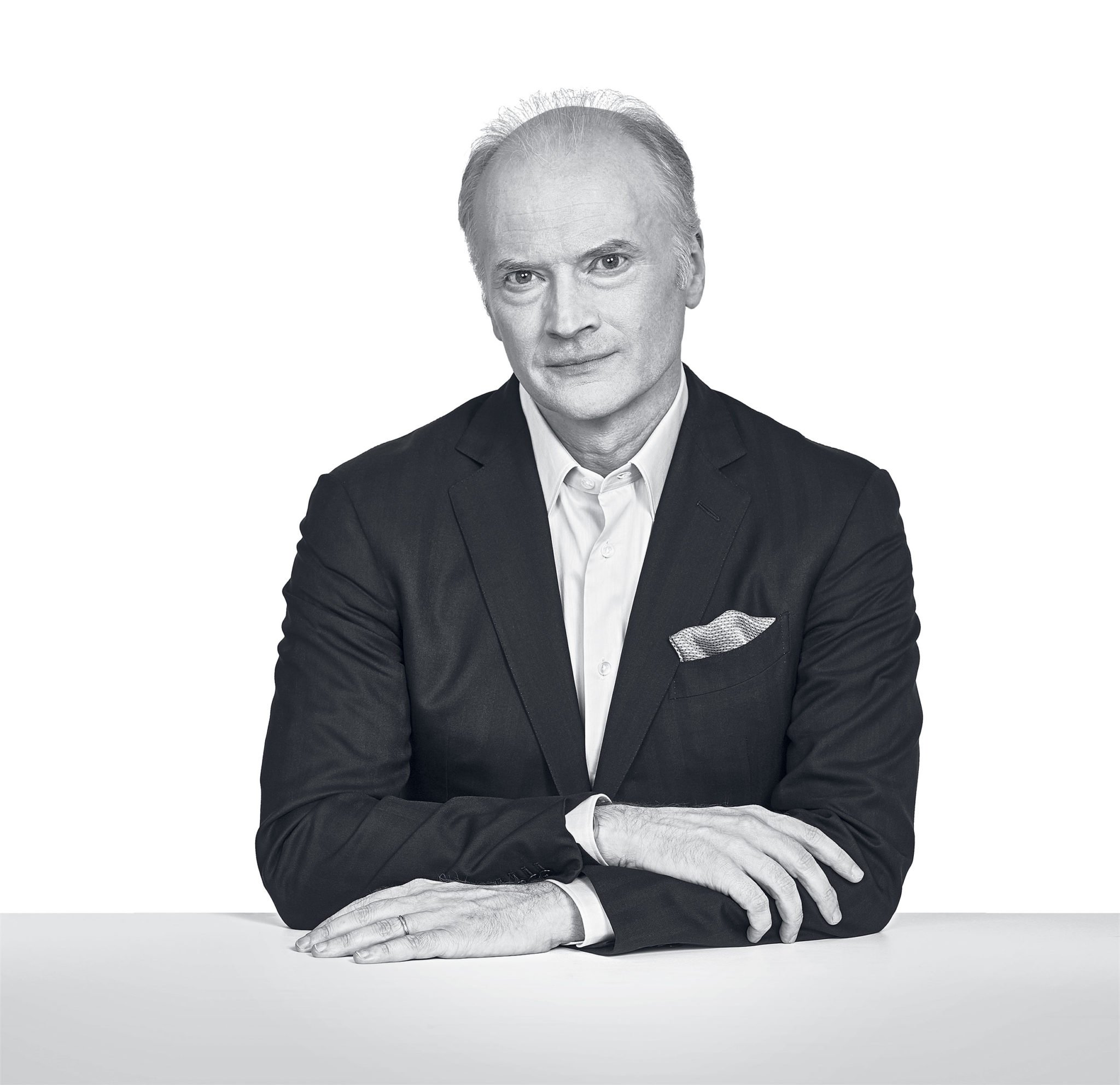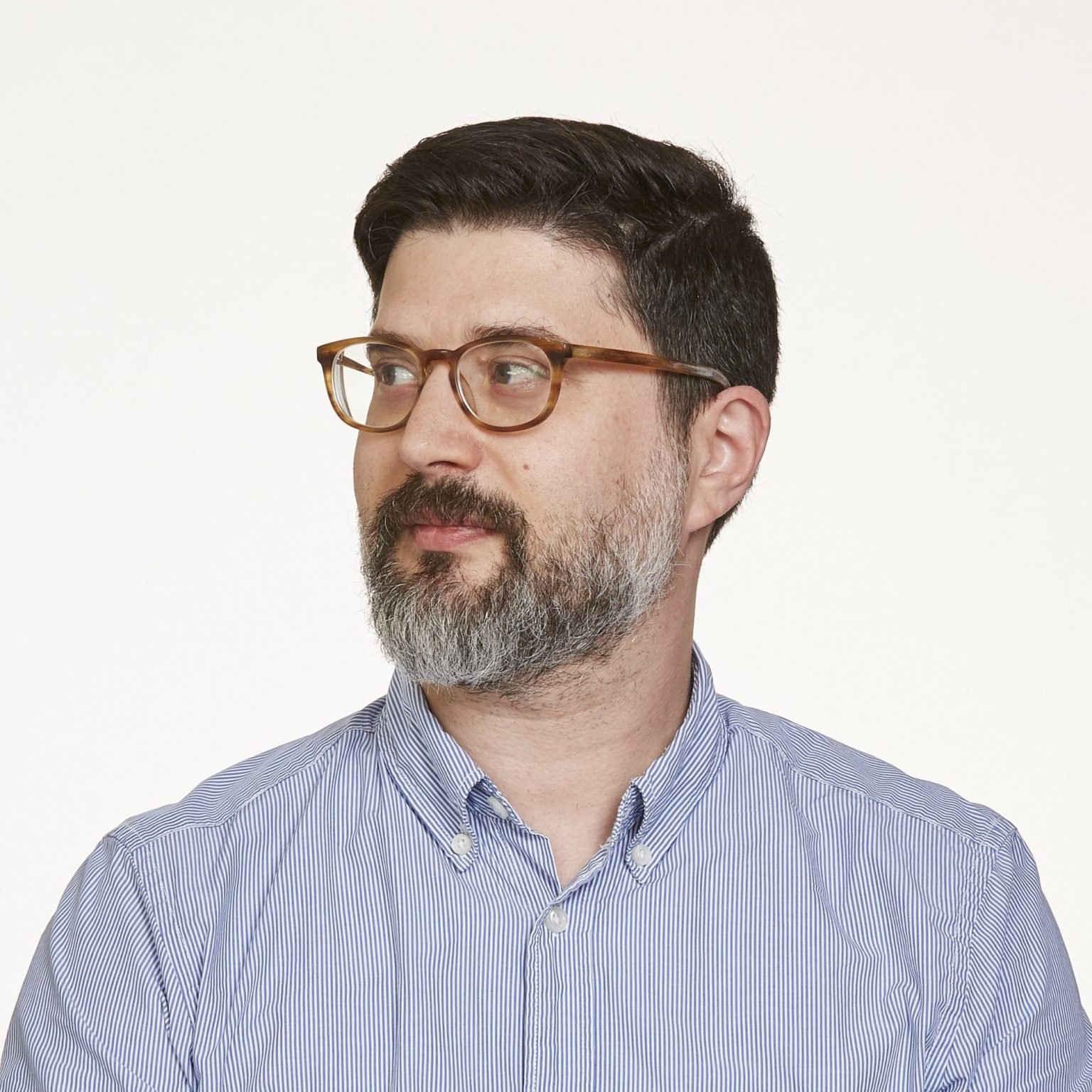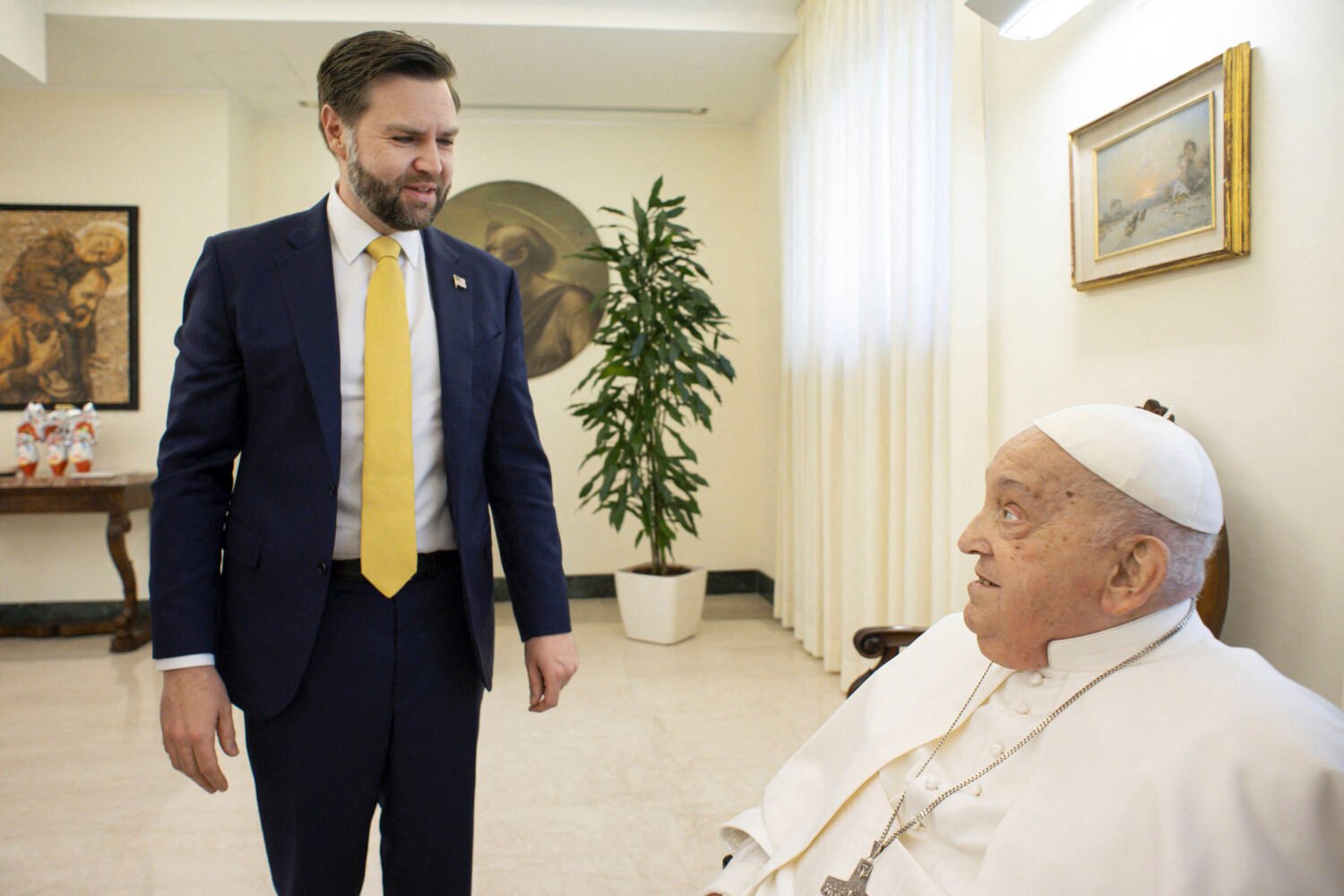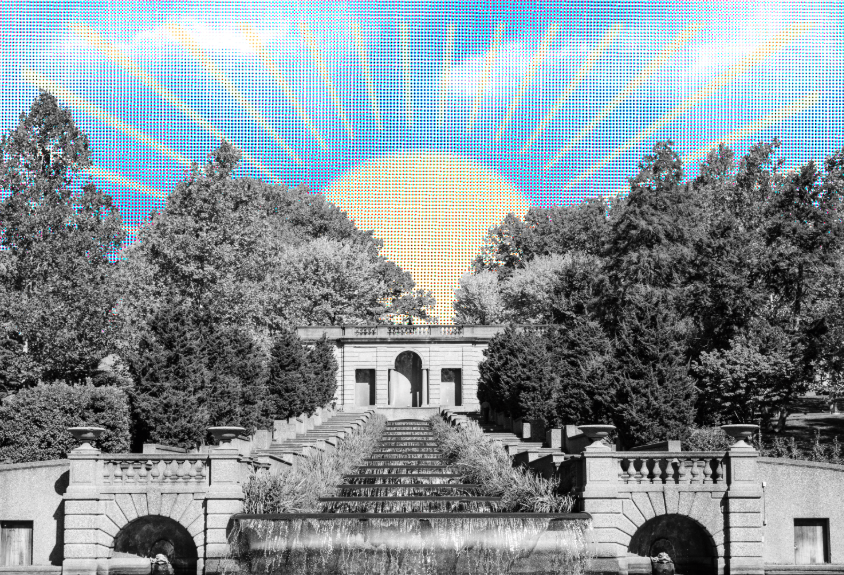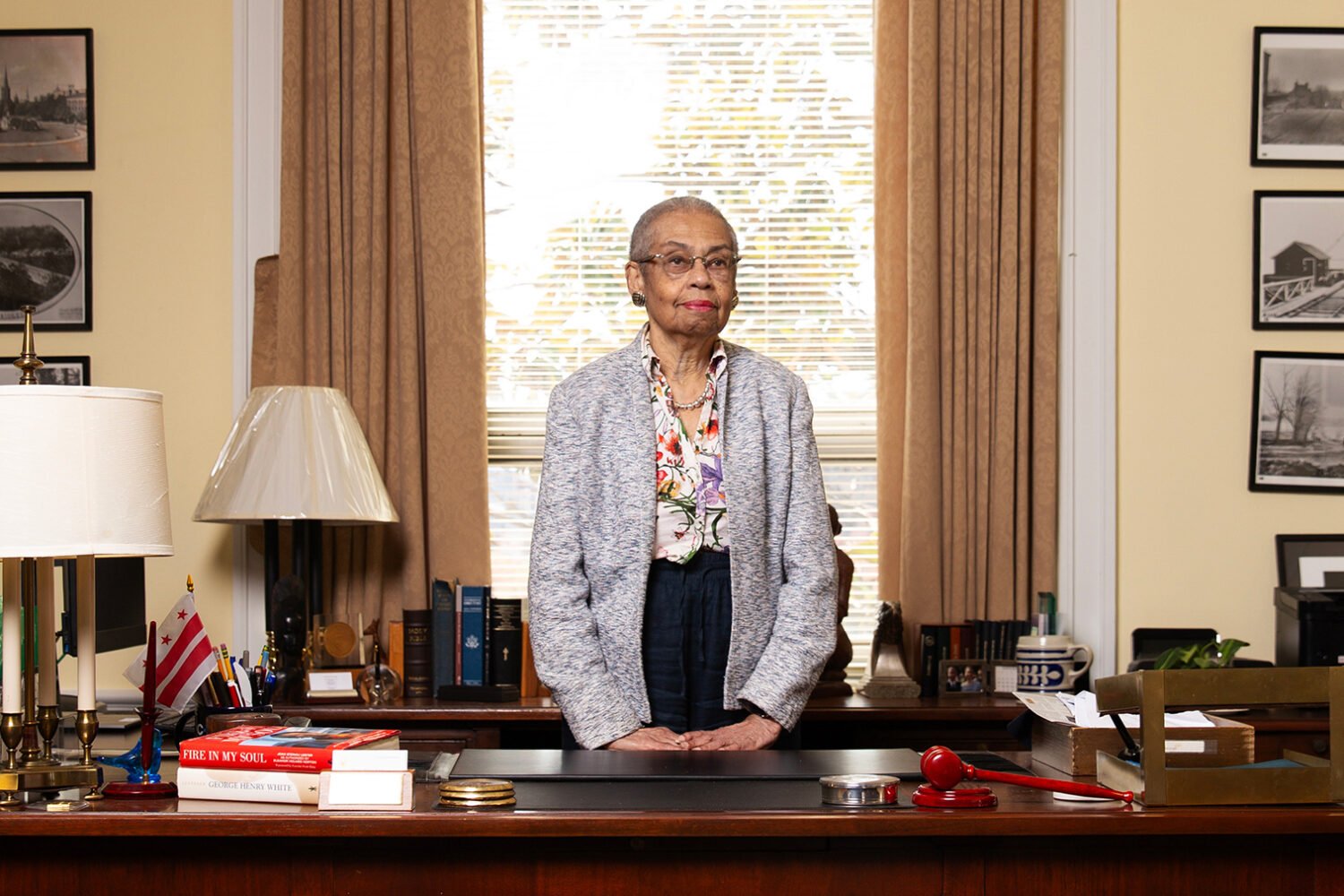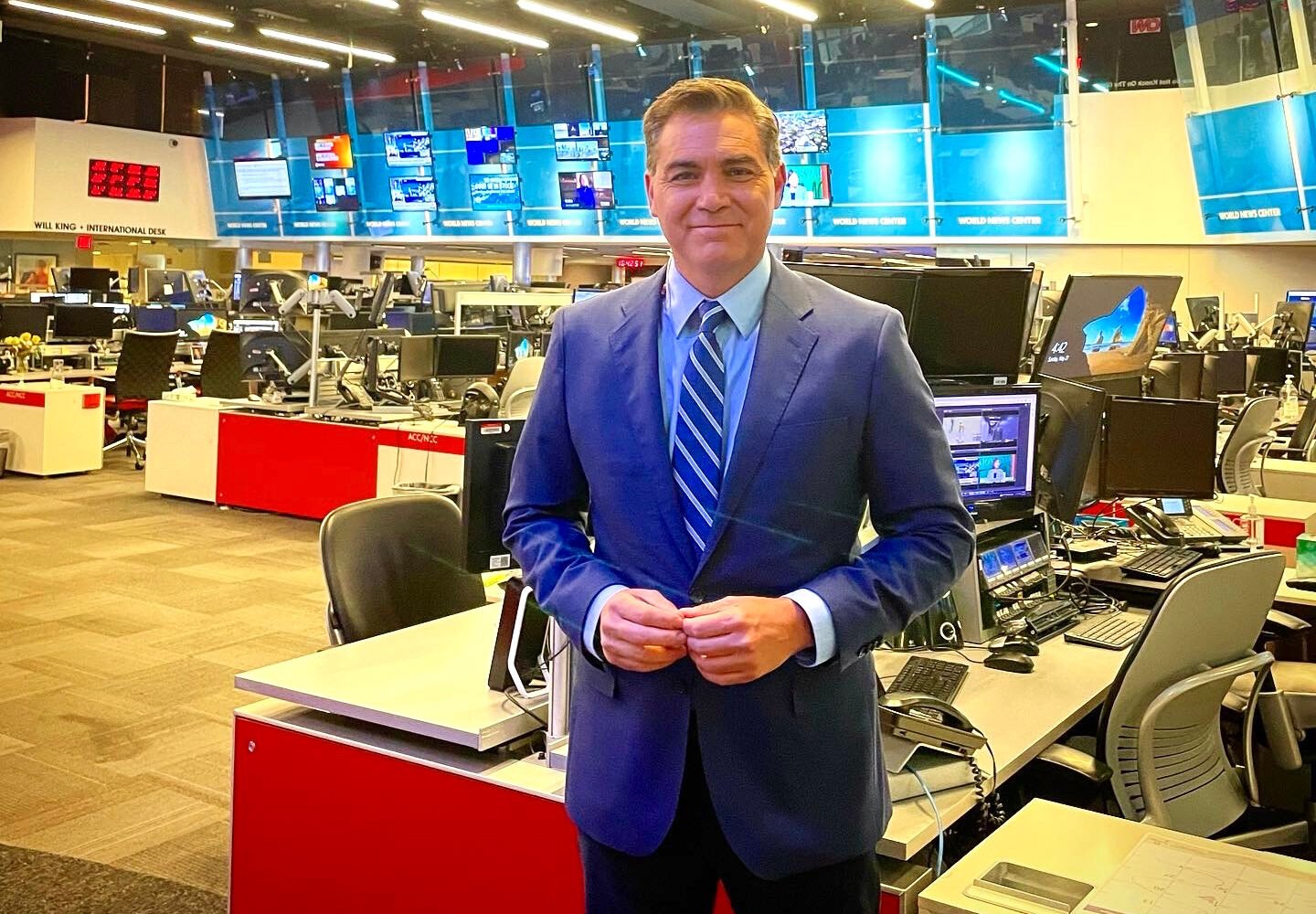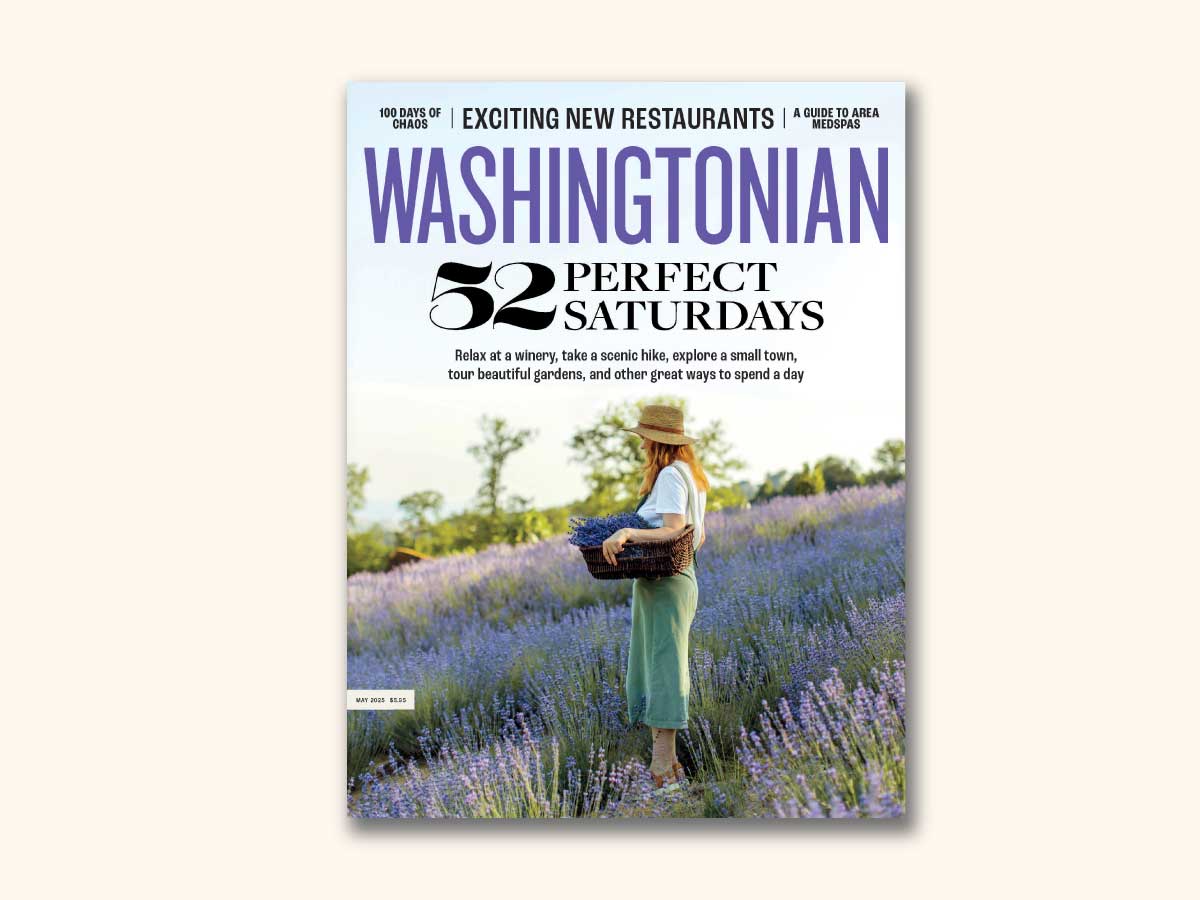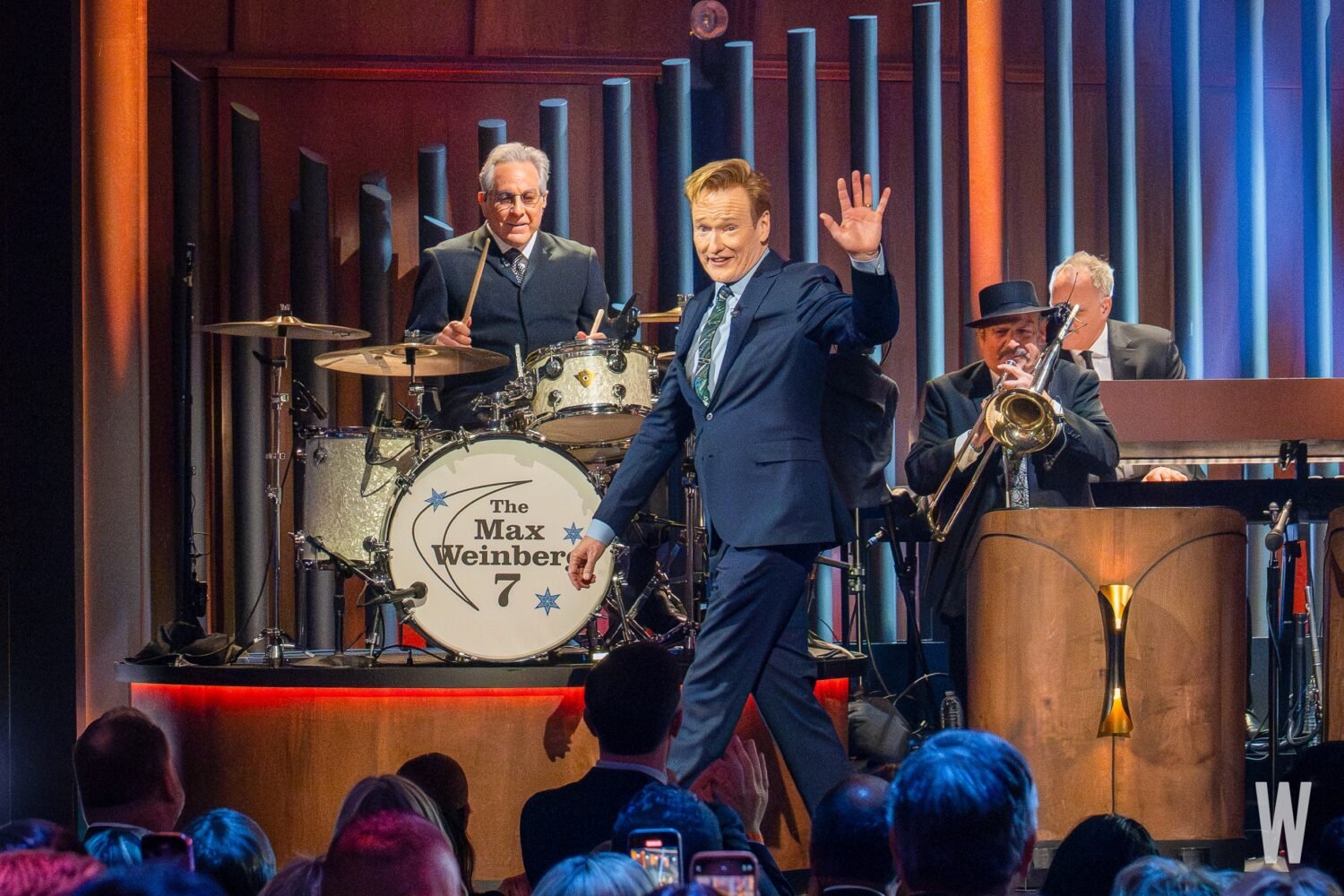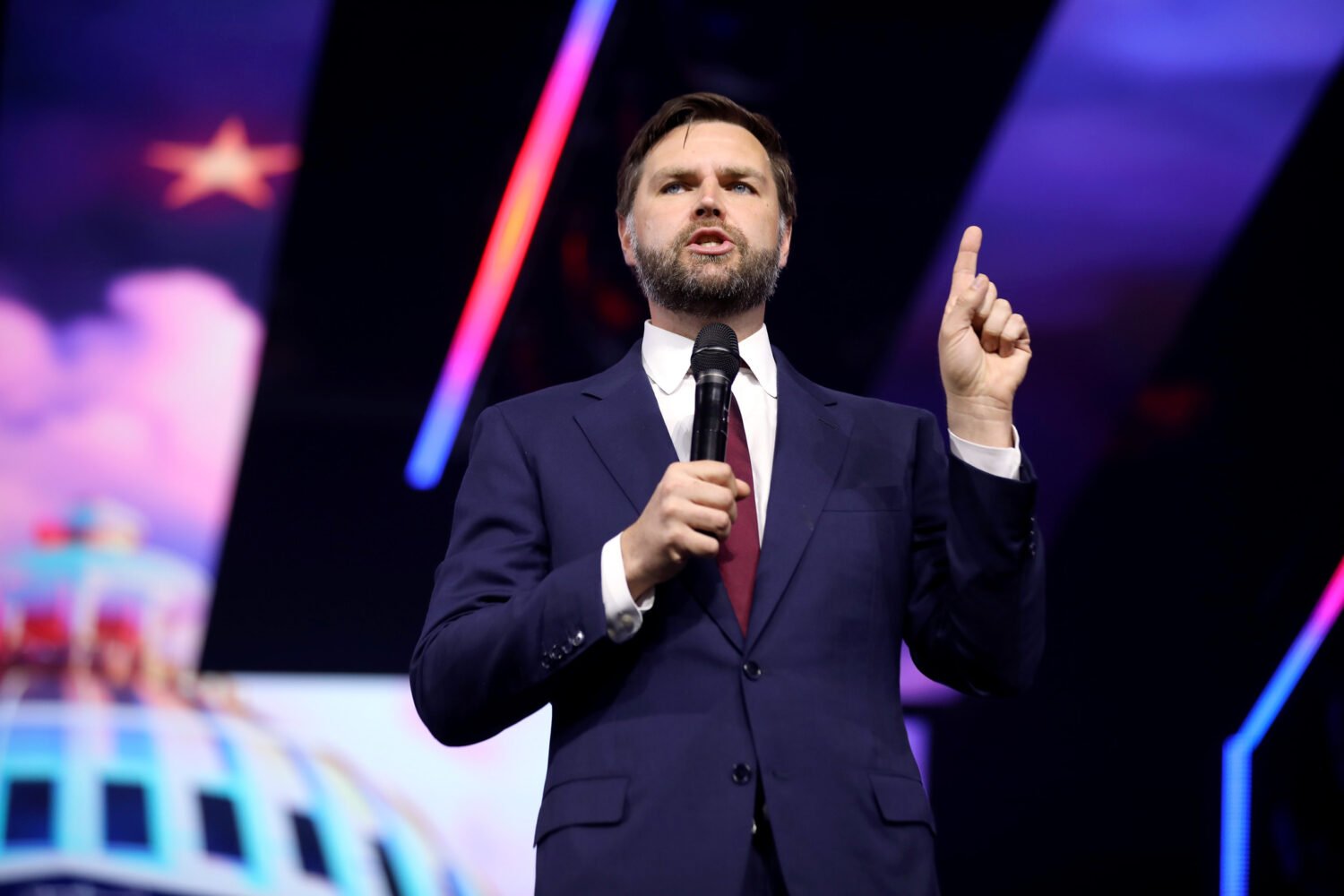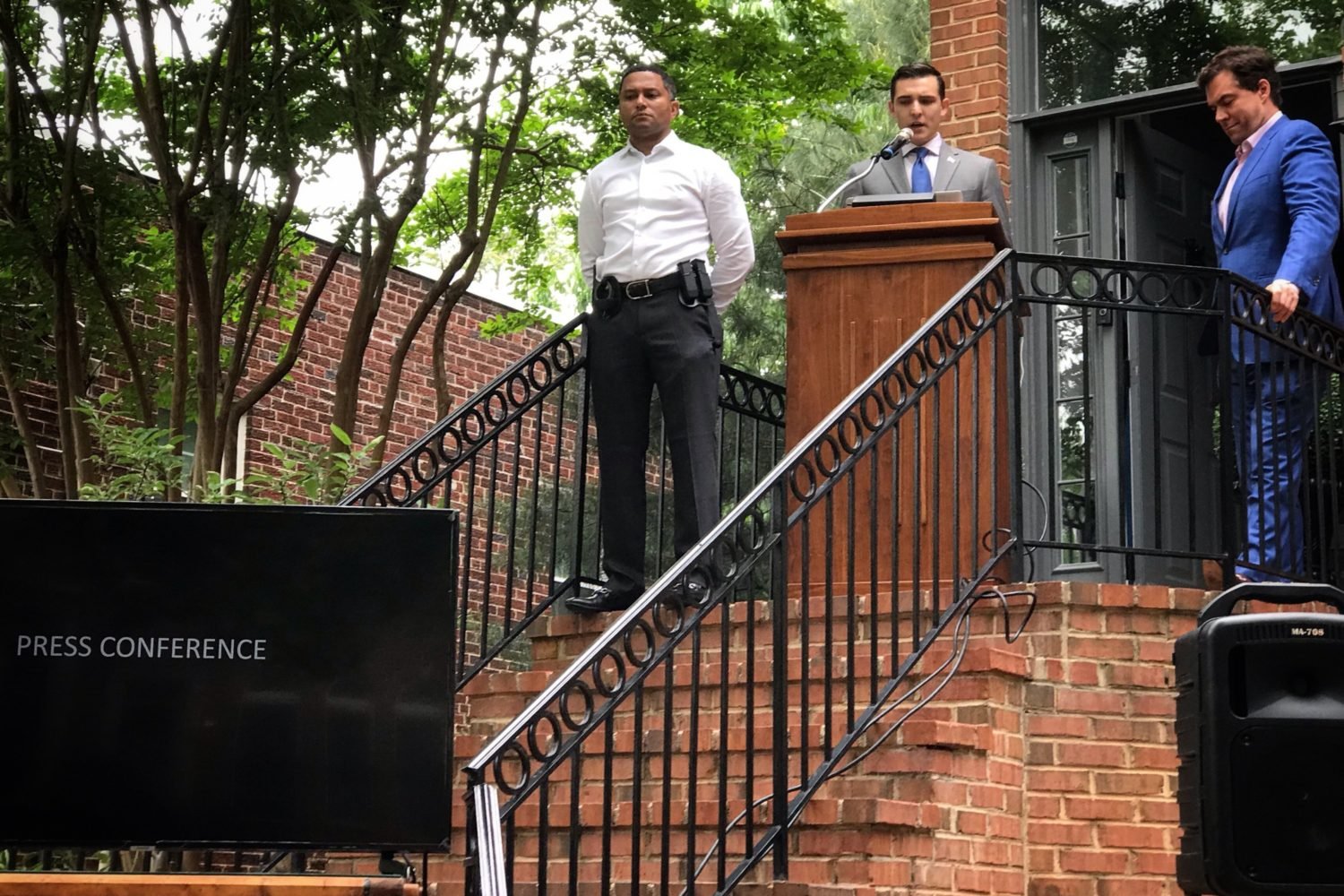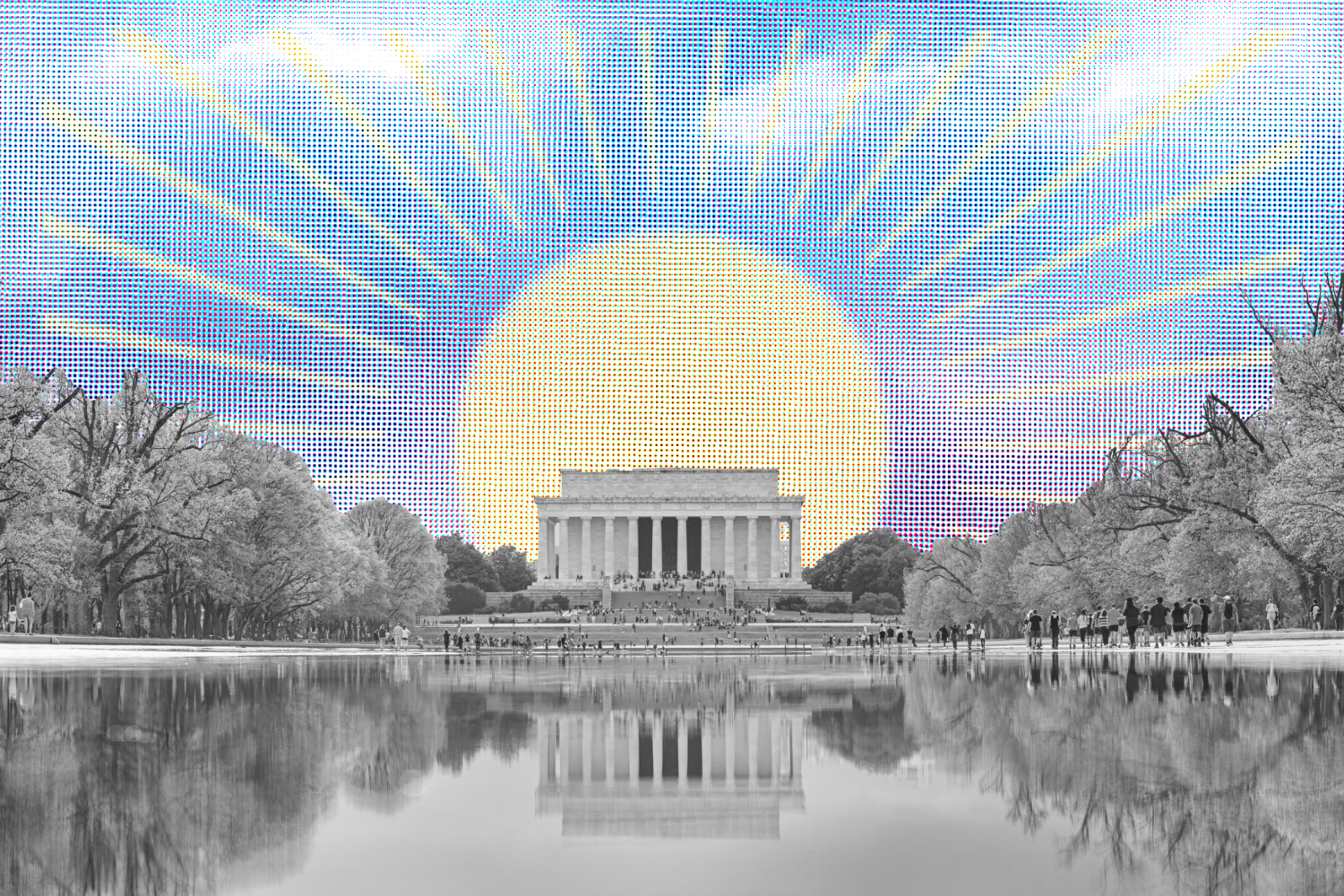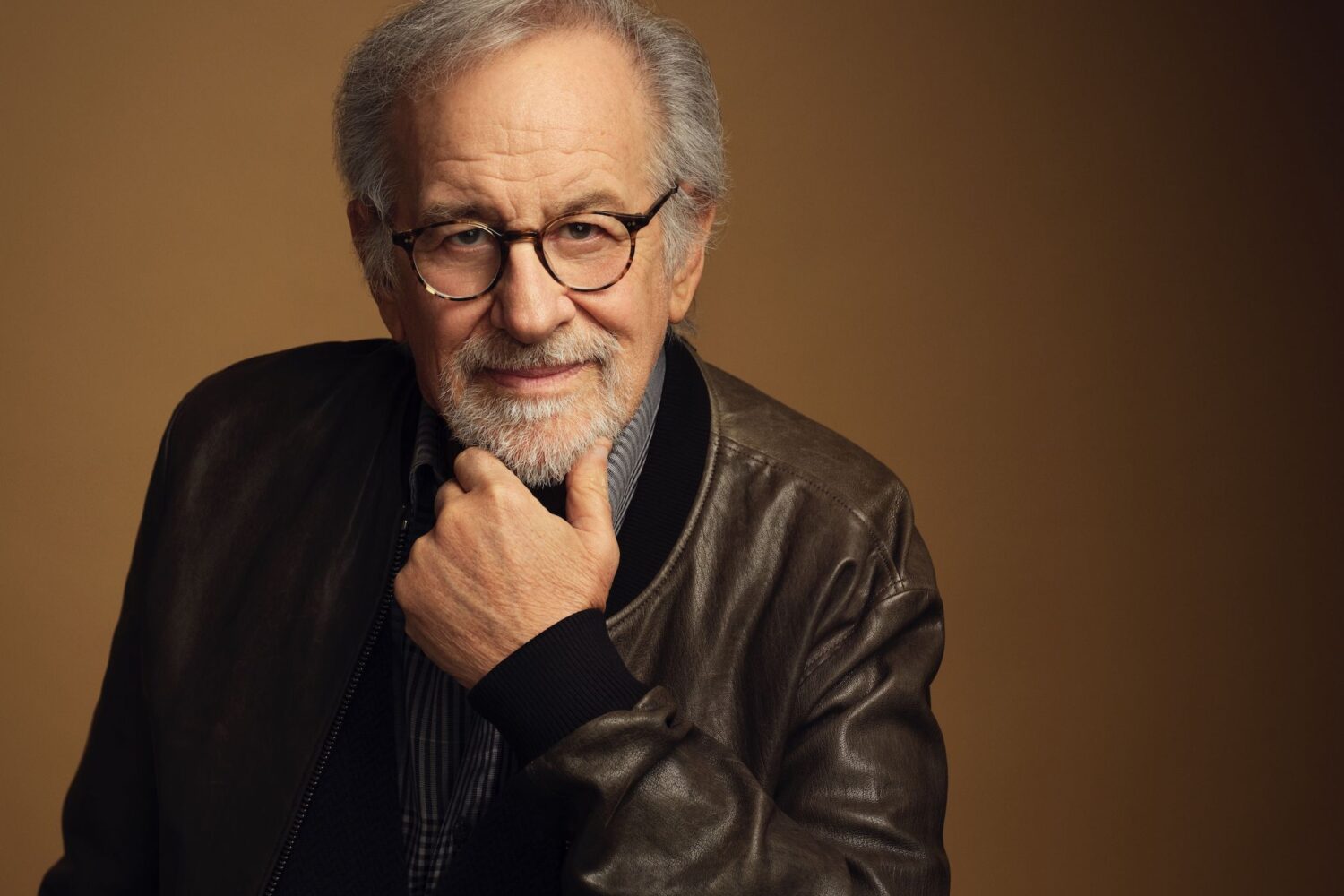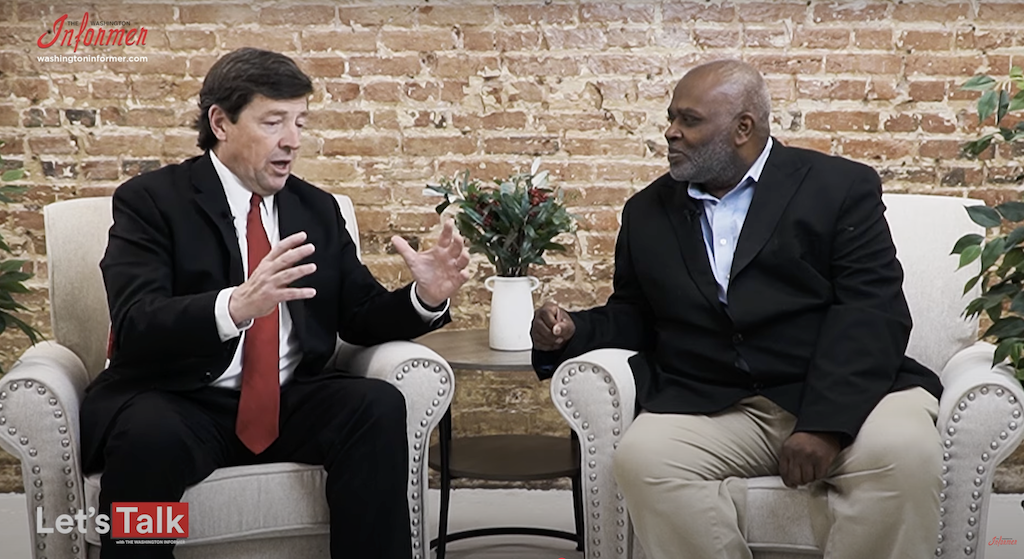Six hours before Gianandrea Noseda was set to lead a performance of Mahler’s Symphony No. 5 and Schubert’s “Unfinished” symphony (and several weeks before DC started to shut down due to Covid-19), the National Symphony Orchestra’s conductor and music director was sitting on a couch in his windowless Kennedy Center office, trying—in his irresistibly expressive way—to describe the indescribable. Significant hand-waving was involved, along with some arched eyebrows and a bit of humming.
A native of Italy, Noseda is now in his third season leading the NSO, and the transformation thus far has been impressive. He’s a riveting figure in performance, as anyone who’s seen him conduct the orchestra can tell you, and is pushing the NSO forward in new ways, most recently by launching a record label, the first recording from which is a live performance of Dvořák’s “New World” symphony and Aaron Copland’s suite from Billy the Kid. Before the shutdown, Noseda was set to lead performances of all nine Beethoven symphonies, also to be recorded for a future release. (All Kennedy Center performances through May 22 have been canceled. So far, no announcements have been made for events scheduled later than that.)
After about an hour of conversation, another obligation on his overstuffed calendar beckoned. He was off with a hearty “Grande piacere”—“A great pleasure.”
Something I’ve always wondered: What’s the difference between a good conductor and a great conductor?
There are not many great conductors. A good conductor can conduct the music; a great conductor has the quality to be an orator, to tell a story, to be a sort of medium between music, the orchestra, and the audience. I mean, I am not putting myself in the league of the great conductors—I have to work much longer to get there. But it’s very personal. Also, a great conductor is a great motivator. The conductor knows the reality that without the orchestra, he or she is zero.
So how do you motivate an orchestra?
You can even give some images to them—not precisely musical but always connected with music. Sometimes they will look at you like you are asking something strange. But after that, when you go back to the music . . . Oh! It makes sense.
I am not ashamed—if the music makes me move a certain way, I do it! If I get the result, I’m happy.
Can you give an example?
For instance, Schubert, symphony “Unfinished.” In a way, it is so melancholic. It’s like the beginning of winter in Vienna, nighttime. It’s not terribly cold, but it’s not warm. It’s not incredibly dark, but the light is not there. It’s this atmosphere where behind the corner you can find a friend or you can find someone who wants to rob you of your wallet. You don’t know.
It’s just an image: You walk, and behind the corner you don’t know what you find. That tells [musicians that] any [musical] bar is leading you to the next bar, and every next bar is a surprise. But if you say it like that, it probably doesn’t stay in the memory. “Every bar leads to the next bar.” No, no. “You walk, you don’t know what you find behind the corner.” Ooh!
You can almost hear what that image sounds like.
Yeah! Vienna, November, Monday night. The snow is not there, but maybe the next day.
The most striking thing about watching you perform is your physical movements. Sometimes it even looks like you’re dancing up there. Where does that come from?
I was not told to use all the body to communicate things. All my teachers tried to convey: Only the arms, be cool, control yourself. But you know, music has such a power. I’m not ashamed—if the music makes me move in a certain way or I need to do something to convey an expression or a color to a musician, I do it! I don’t know if it is orthodox or not, that movement, but if I get the result, I’m happy.
There’s also a performance aspect of it: A large audience is watching you, and you’re just fun to watch. How much do you think about what you do as a visual performance versus an auditory one?
When I take a bow and turn to the orchestra, my environment is with the orchestra. The audience is behind my back. I know that the audience is there, and I feel the energy. If the concert is particularly good, I feel huge amounts of pressure and energy coming from the back. I feel that! But I don’t think, “Oh, a lot of people are watching me.” That is not good—I would start to be nervous. I remember when I conduct for the first time in La Scala or the Metropolitan, it’s a bit dark, but you feel the presence of a massive quantity of people. You think, “Oh, my God, now I have to conduct.” So immediately you bow, you turn. Okay, ah—the orchestra! And you start.
I recently read a novel in which members of a family go to hear Beethoven’s Fifth, and they all listen differently. One taps along to the tune, one thinks about the score, and then one is visualizing wild scenes with goblins and elephants in her head. As someone who is so immersed in the technical aspect, do you also care about the elephants and goblins?
The magic of music is precisely that: You perform, and anyone can take what they want. Someone who is close to rhythm, you will see the movement following the rhythm. Someone will visualize the story. It may be a different story than the one I tried to convey, but that doesn’t matter. [Voice gets low and quiet.] And in that moment, thousands of elephants are just coming down from the sky.
Like in the third movement of Tchaikovsky “Pathétique.” It’s a sort of march, but I don’t feel they are soldiers. I think is an invasion, but is an invasion of insects. From very far, you see just a line of gray or black, and as they come closer, actually there are billions of insects. And after that, you don’t exist anymore. That is very tragic and dramatic, but the end—the adagio—is a funeral march.
Yikes. Now I will never hear that the same way.
You have to keep a sort of idea in your mind. Maybe I am completely wrong! You don’t know if you have the truth in your pocket. You can imagine, but you don’t know.
The piece I mentioned in that book, Beethoven’s Fifth Symphony, is one that you’re going to conduct this year as part of the cycle of Beethoven symphonies. That is, of course, one of the most familiar pieces of music ever written. How do you bring something new to it?
The intention is not to bring out anything new. The intention is to try to forget all your previous impressions and start from nothing. The music should sound new to me, first of all. Don’t take it for granted because you conduct it already 30 times or 50 times or even more. Just, okay, start from page one. Like you are conducting the world premiere.
The four most famous notes in classical music and you have to somehow hear them anew.
Yeah, but even those four notes . . . dat-dat-dat doh. Ba-ba-ba boh. Bee-bee-bee boh. Dee-dee-dee doh. Always going down. But there are two moments in the first movement going upward. And after that, Beethoven adds an empty bar, which is not expected. Why? I don’t have the solution, but you have to be able to notice that and not to take it for granted because you have been listening since you were a child. Why did he add this empty bar? It’s not needed.
With the great composers, they are full of these kind of things. The thing for us is to be Sherlock Holmes, to find the solution. For instance, the shortest of Beethoven’s symphonies, No. 8, includes in the development of the first movement the longest crescendo written by Beethoven. In the shortest symphony, the longest crescendo. That means something, so you have to be able to recognize it. But what? Most of the time for a conductor, the question is why.
Okay, a similar question to my first one: What is the difference between a good orchestra and a great orchestra?
A great orchestra is the one that is able to have a vision, to imagine sound, to be able to be surprised by the quality of the other components of the orchestra, and to react. The radar of the airport is always on while you’re playing, detecting: Oh, that is beautiful, so I react according to that. It’s not I do my job, you do your job, you do your job. It’s trying to find something that involves everybody. The greatest orchestra is the one where everybody is incredibly talented—but the talent is in the service of the talent of the others. And all together, that talent serves the music you are performing.
It happens in some performances—very rarely—that you feel everybody breathing the same moment, the heartbeat for one second is boom, all together, 100 people. You have this feeling: Everybody is just there. Yeah, that is a miracle.
When did you last feel that?
In my life, I remember probably three or four of these moments. Once was when I was doing La Traviata in Japan, during “Addio, del passato,” the last aria by Violetta. At a certain point, I didn’t realize, but I stopped conducting. Everything was perfect. And then I realized, Oh, I’m not conducting! But everything was sublime. I don’t think it lasted more than one second and a half, two seconds. But that impression that everybody was just on top of that, losing themselves in a long state of ecstasy—in one second of ecstasy—that was . . . yeah.
Where do you think the NSO is right now on that line from good to great?
Oh, we are in a fantastic direction. It’s always been great, this orchestra, but now there is an element of consistency and a strong wish to deliver in any concert. Sometimes it’s not perfect, but the greatest orchestra is not the most perfect one. It’s the one that is really trying to convey something bigger.
Why launch a label right now? Why is releasing recorded music the next step?
Because I like to leave a legacy. Simply that. I strongly believe we are doing great music together, me and the orchestra. A recording is like a photo. It’s the legacy you leave for the next generation. Maybe in 200 years’ time, someone will say, “Let’s see what they were doing in 2020.”
What do you want those people in 200 years to hear? What do you think you’ve captured that’s worth preserving?
The enthusiasm and generosity in playing. Because if there is truth and generosity—you give yourself completely for the music—I think it comes through the recording. It’s nice if through the recording you feel that amount of enthusiasm, generosity, energy, love.
When you’re working with orchestras and soloists and singers, you must some-times have disagreements about the direction of the performance. How do you handle that?
A couple of times in 26 years. It’s very rare. With a soloist or a singer, I can find a different idea, a different approach, different interpretation. My simple question is “Why?” Give me one reason. If they give me one reason, I will help them completely. But if the answer is “Why not?” or “I’ve always done it like that,” in that case I give you 20 reasons not to do that.
Because you’ve thought it through.
Because I’ve thought about it! If you give me one reason, it’s enough, even versus my 20 reasons not to do it. It means you thought about it. But if you say, “Oh, I’ve always done it like that,” that is not an answer. Maybe you have always done it wrong!
This article appears in the April 2020 issue of Washingtonian.

